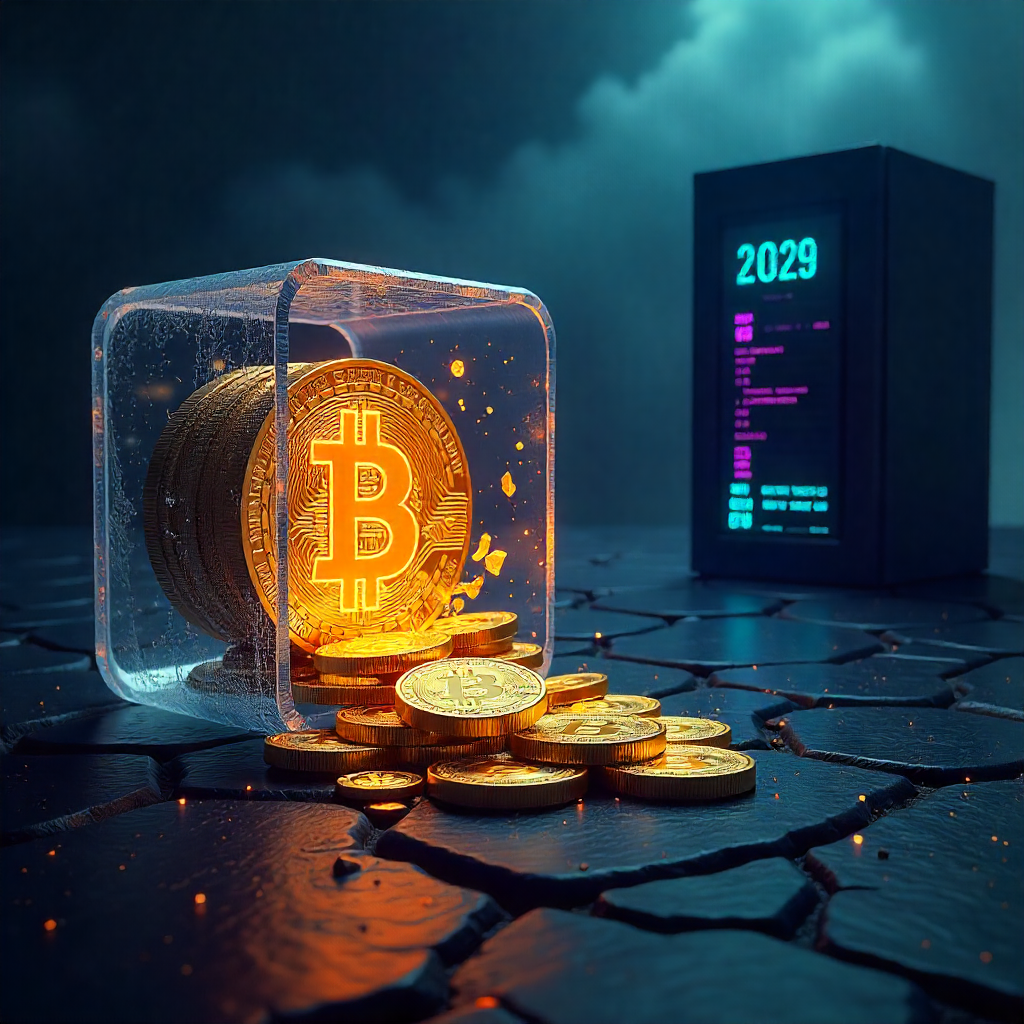Why This Appeal Matters to the Entire Crypto Sector
On January 21, 2025, Coinbase filed a landmark interlocutory appeal with the Second Circuit, asking the court to determine whether secondary trading of crypto tokens on its platform constitutes securities transactions. This legal maneuver stems from the SEC’s June 2023 lawsuit, which accused Coinbase of operating as an unregistered securities exchange, broker, and clearing agency.
The focus of this appeal is laser-sharp: Does the sale of tokens on secondary markets like Coinbase’s platform satisfy the definition of an “investment contract” under the Howey test? This issue, while legal in form, is monumental in scope. If resolved in Coinbase’s favor, the outcome could redraw the regulatory map for crypto exchanges operating in the U.S., freeing them from the burden of registering under securities laws unless additional issuer-level factors apply.
The Coinbase secondary trading appeal centers around whether the SEC overextended the Howey test to transactions that don’t involve contractual obligations between token sellers and buyers. Coinbase argues that the absence of a “post-sale obligation” from the original issuer to the token purchaser should exclude such transactions from securities classification. This framing aims to distinguish crypto tokens sold in secondary markets from traditional securities, like stocks or bonds, that carry enforceable rights and responsibilities.
This appeal doesn’t just affect Coinbase. If the Second Circuit sides with Coinbase, exchanges like Kraken, Binance.US, and others currently under SEC scrutiny may find a path to regulatory clarity. Conversely, a ruling upholding the SEC’s position could entrench the agency’s oversight across nearly all crypto trading venues. The implications reach even deeper when you consider how this intersects with prior Ripple and Terraform Labs rulings, each of which interpreted Howey in slightly different ways. For the entire industry, the Coinbase appeal could become the unifying precedent that either legitimizes or severely restricts secondary crypto markets.
Legal Background and Howey’s Role
To understand the full stakes of the Coinbase secondary trading appeal, one must revisit the legal backbone at play: the Howey test. Established by the Supreme Court in 1946, this test defines an “investment contract”—and thus a security—as a transaction involving an investment of money in a common enterprise, with an expectation of profits derived solely from the efforts of others.
The SEC has applied Howey broadly in its enforcement actions against crypto firms. Its core assertion is that many token transactions, including those on secondary markets, meet all three prongs of the Howey test. The Coinbase case is no exception. In its original complaint, the SEC alleged that tokens like SOL, ADA, MATIC, and others traded on Coinbase represented securities because purchasers expected profit from the teams or companies that developed the networks behind those tokens.
Coinbase, however, disputes that claim. It argues that even if a token was initially sold as a security, its subsequent trading on a secondary exchange—absent any direct promise or contractual tie to the issuer—does not meet Howey’s criteria. The company stresses that its platform simply facilitates trades between users and that it plays no role in promoting or managing any specific token project. This view gained some judicial traction when SDNY Judge Katherine Polk Failla partially accepted Coinbase’s argument, stating the question of whether secondary-market crypto sales qualify as securities was novel, and warranted review.
Coinbase’s legal team contends that extending Howey to cover secondary token sales without issuer involvement represents a dangerous regulatory overreach. They argue that such an interpretation blurs the line between assets and contracts, essentially making almost any traded good a potential security. Their appeal asks the Second Circuit to affirm that secondary crypto trades—unlike initial offerings—are not securities transactions unless specific post-sale obligations exist.
The broader crypto ecosystem is closely watching this argument, as the case’s outcome may set a defining precedent for future litigation involving other exchanges. A favorable ruling for Coinbase could substantially narrow the SEC’s enforcement reach, while an unfavorable one could affirm a sweeping interpretation of Howey that envelops most crypto markets under securities law.
Implications for Exchange Compliance
The Coinbase secondary trading appeal poses immediate compliance challenges for exchanges. This appellate decision will shape their registration requirements, risk mitigation, and future policies. Here’s a detailed breakdown of what exchange compliance officers need to know.
Registration Burden If Secondary Trades Are Securities
If the appeal concludes that secondary trades qualify as investment contracts under Howey, exchanges might have to register as securities exchanges, broker-dealers, and clearing agencies. The SEC originally accused Coinbase of operating in all three capacities since 2019. Compliance teams must prepare for expanded licensing processes, heightened disclosure and audit obligations, and compliance with SEC rules for securities trading.
Operational Disruptions from Ongoing Uncertainty
The prolonged appeal creates uncertainty. Decisions on token listings, custody, and trading pairs may stall. Chief compliance officers should maintain flexible workflows and implement escalation procedures to limit new asset listings during regulatory limbo.
Ecosystem Considerations In Listing Policies
The SEC may apply the ecosystem theory, considering ongoing issuer influence on token value. This means tokens that rely on network updates, staking programs, or centralized development could require review under securities law. Compliance officers should evaluate each token’s protocol structure and issuer connection, and reassess whether frontline listing criteria meet evolving legal standards.
Due Diligence, Disclosure & Reporting Standards
A ruling that reinforces Howey’s reach means that exchanges must enhance disclosures to traders, report suspicious activity and keep detailed records on token issuers’ activities. As highlighted by the Third Circuit’s review, insufficient clarity from the SEC complicates this task.
Major Questions Doctrine & Review Opportunities
Coinbase invoked the major questions doctrine in its petition. That raises the possibility of requiring congressional clarity on secondary-market securities regulation. Compliance teams should monitor whether new legislation or formal rulemaking arises. This doctrine may also limit how broadly the SEC can regulate without explicit statutory authority.
Industry-Wide Ripple Effect
This case could trigger preemptive changes across exchanges. Binance and Kraken have made similar legal arguments. Expect platform-wide reassessment of token status and industry coordination to align compliance under anticipated second-circuit precedent.
Strategic Planning for Possible Outcomes
Compliance leaders should develop multi-scenario plans based on the appeal’s outcome. If the appeal confirms secondary trades are not securities, exchanges may experience relaxed registration needs but must stay vigilant of other SEC claims. If the appeal confirms they are securities, exchanges should begin registration processes, build disclosure frameworks, and enhance surveillance. If the ruling is limited, they should focus on clarity for a subset of tokens and adjust incrementally. These structured plans help maintain compliance and limit business disruptions.
Timeline & Next Steps
This section maps out critical upcoming steps and possible scenarios following the Coinbase secondary trading appeal.
On January 21, 2025, Coinbase officially filed its brief with the Second Circuit, requesting permission to proceed with its interlocutory appeal. The appeal hinges on whether secondary-token trades constitute “investment contracts” under the Howey test.
The Second Circuit must first decide whether to accept the appeal. This is a discretionary step. If accepted, the case advances. If denied, SDNY proceedings will resume.
Since the interlocutory appeal was certified, the SDNY case remains paused. This stay halts discovery and deadlines until the appellate court rules on acceptance.
If the Second Circuit accepts the appeal, it will establish a briefing schedule. Coinbase and the SEC will file merits briefs. An oral argument likely will follow in mid-2025, given typical appellate timelines.
A favorable ruling for Coinbase could potentially end the entire SEC case or require dismissal of core claims. If the court sides with the SEC, SDNY proceedings will resume—with stricter implications for Coinbase and possibly other exchanges.
Either side could appeal to the Supreme Court. However, SCOTUS acceptance is unlikely unless the Second Circuit decision generates conflicting appellate rulings.
This timeline highlights crucial dates:
January 21, 2025 – Coinbase filed Second Circuit brief.
Mid-2025 – Decision on appeal acceptance and possible oral argument.
Post-decision – District Court action resumes or appeal moves forward.
Strategic Takeaways for Compliance Teams
The Coinbase secondary trading appeal is more than a legal battle—it’s a guidepost for future compliance. Exchange compliance officers must proactively prepare for shifting regulatory landscapes. Here are key actions and insights based on up-to-date developments and court dynamics:
Adopt a Dual-Track Compliance Framework
Remaining agile is crucial. The SEC may roll out settlements that clarify how secondary-token trades are treated. Compliance teams should prepare for both possible outcomes—one path where secondary trading passes as non-securities, and another requiring registration as a securities exchange, broker, and clearing agency, including enhanced audits and disclosures.
Maintaining this dual-path readiness allows firms to minimize disruption, manage legal exposure, and preserve business continuity regardless of the ruling.
Refine Token Classification Protocols
Compliance teams should develop or refine internal token classification frameworks. Tokens must be screened not just at launch but throughout their lifecycle. Criteria should include issuer involvement, marketing language, community governance, and ongoing project development. Clear documentation and reasoning behind listing decisions will aid in defense if challenged by regulators.
Enhance Internal Legal and External Communication
Legal teams should proactively engage with outside counsel and regulators. Internal stakeholders must understand the legal basis of token classifications. External messaging should avoid promotional language that could imply investor expectations or profit guarantees. Carefully worded disclosures and marketing material can reduce regulatory risk and align with judicial interpretations of Howey.
Plan for a Second Circuit Ripple Effect
A Coinbase victory could create a binding precedent in the Second Circuit and persuasive authority nationwide. If this ruling diverges from the Ripple or Terraform decisions, the legal community may urge Supreme Court intervention to harmonize securities doctrine for crypto. Exchanges operating nationally should assess the jurisdictional scope of any ruling and build compliance strategy accordingly.
Monitor for Legislative or Regulatory Follow-Up
The appeal may prompt legislative responses. Lawmakers could accelerate crypto regulatory bills currently stalled in Congress. The SEC might also issue guidance or finalize rulemaking tied to token classification. Compliance officers should establish a legislative monitoring function and work closely with trade groups like the Blockchain Association or Chamber of Digital Commerce to interpret policy signals early.
Coinbase Appeal Could Set the Course for Crypto’s Future
The Coinbase secondary trading appeal marks a turning point for crypto regulation in the U.S. The Second Circuit’s decision will clarify whether common secondary crypto trades fall under securities law. This has massive implications for exchange compliance, token listings, and market expansion.
Coinbase rightly dubbed the case “of immense importance to the crypto industry,” seeking unified national guidance. The district court found the legal question deeply contested and rare enough to pause proceedings under Section 1292(b).
If the Second Circuit rules secondary trading is not a security, exchanges may proceed without registering as traditional securities brokers. A ruling the other way could require extensive disclosure regimes and trading regulations under the Exchange Act.
The crypto industry is watching. This case offers a chance to resolve conflicting rulings in Ripple, Terraform, and Binance. The Second Circuit’s output will shape rules, compliance norms, and strategic planning across exchanges.
For compliance officers and exchange leaders, this moment is a call to readiness. Stay alert to updates, scenario-plan, and adjust policy frameworks in real time. The Coinbase secondary trading appeal could define the next era of U.S. crypto market structure.





